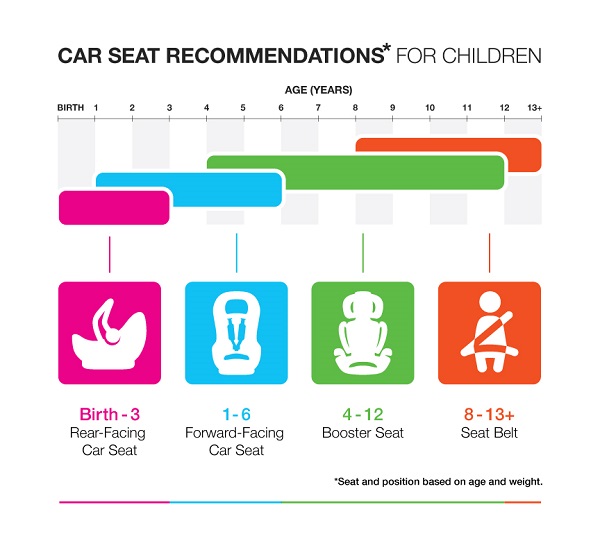April 7, 2020 by John Fernandez
7 Child Passenger Safety Tips (Infographic)

Every year, car accidents kill or seriously injure thousands of children in the U.S. What’s more, car crashes rank as a leading cause of death for children ages 13 and under, according to the National Highway Traffic Safety Administration, which offers several resources for parents seeking to use child safety seats and restraints correctly.
But car accidents are only part of the story when it comes to vehicle safety steps for children and parents, according to Fernando Mendoza, M.D., medical director, Children’s Emergency Center at Baptist Children’s Hospital, and associate medical director of emergency services at West Kendall Baptist Hospital.
“One of the most important points about car safety is to never leave a child alone in the car,” Dr. Mendoza says. “It can get deathly hot in car, and a child could die from heat exhaustion if left alone in a locked car.”
September Safety Reminders
Car safety reminders are timely in September. Child Passenger Safety Week is September 13-19, and National Seat Check Saturday takes place September 19. That’s when communities across the country will provide free car seat checkpoints staffed by safety experts. The technicians can review the safety of the child restraints in your car and provide safety tips and reminders.
7 Car Safety Tips
Dr. Mendoza offers these car safety guidelines for parents:
1. Adult supervision. Young children should never be left alone and unsupervised in a car — even if the car is left on. In addition, to the potential health risks of extreme temperatures, a toddler can squirm free from child restraints and play around with keys, car pedals and the steering wheel.
2. Headcount. Take a headcount when you get in and out of the car. In recent weeks, several stories have gone viral on social media, with bleak accounts about babies and toddlers left behind in cars by multi-tasking parents.
3. Proper car seats (see infographic below). “Kids absolutely need to be restrained appropriately in cars based on age, size and weight,” Dr. Mendoza says. He urges parents to visit federal websites that offer detailed instructions about the type of restraints needed for infants, toddlers and school-age children. Online resources even include a car seat calculator that lets you input a child’s age, height and weight to determine the type of car restraint and positioning appropriate for your child. Click here to access the calculator.
4. Rear-facing infant seats. Infant seats should be properly positioned and restrained while in a car. Medical and safety experts recommend placing young children in a rear-facing car seat position until he or she reaches the top height or weight limit allowed by the car seat’s manufacturer. “Safety is not just a matter of size,” Dr. Mendoza says. “In the event of an accident, the muscles and spinal area of babies and toddlers are better protected in a rear-facing car seat position. Their neck muscles aren’t strong enough to withstand the forward motion of a crash.”
5. Booster seats and seat belts. School-age children should use booster seats until seat belts fit them correctly. “Seat belts are not supposed to be strapped across a kid’s neck,” Dr. Mendoza says. “Should a crash occur, your child could be at a greater risk of a neck or spinal injury if the seat belt strap is positioned across the neck.” The correct position for a seat belt is across the collar bone and chest.
6. Backseat passengers. “Even for older children, the backseat is a safer place,” Dr. Mendoza said. You may be tempted to let your 8- or 9-year-old child ride in the front seat of the car. Many parents use carpools for school, and since they need the space, they’ll often put young children in the front seat. But don’t take that risk, Dr. Mendoza says. Front-seat airbags could deploy in a crash. The force and heat from those devices — which are designed for adult bodies — could deliver burns or head and neck trauma to teens, pre-teens and young children who ride in the front passenger seat. The U.S. Centers for Disease Control and Prevention guidelines state that until your child is 12 years old, they should ride in the back seat.
7. Carbon monoxide poisoning. “Never leave a car running in a garage because of the risk of carbon monoxide poisoning,” Dr. Mendoza says.
top stories













There are no comments